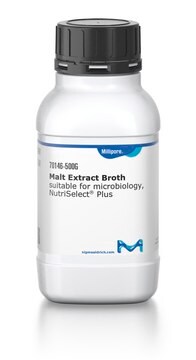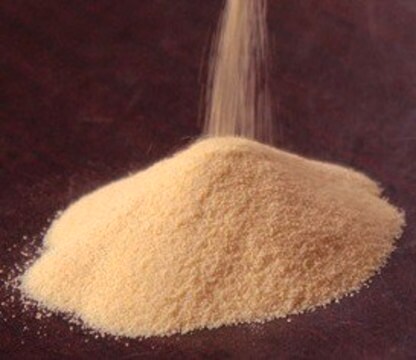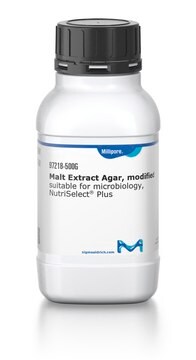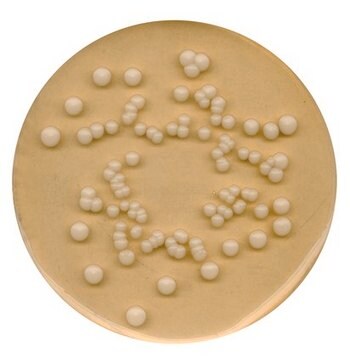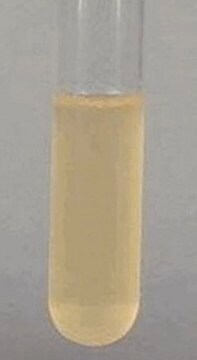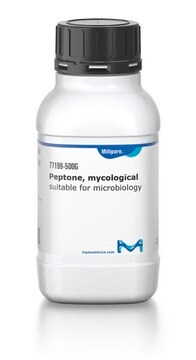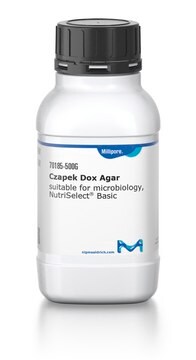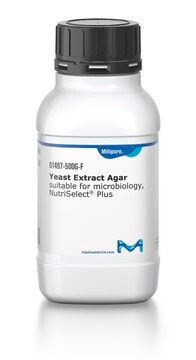70145
Malt Extract Agar
suitable for microbiology, NutriSelect® Plus
About This Item
Recommended Products
sterility
non-sterile
Quality Level
form
powder
shelf life
limited shelf life, expiry date on the label
composition
agar, 15 g/L
malt extract, 30 g/L
mycological peptone, 5 g/L
packaging
pkg of 100 g
pkg of 2.5 kg
pkg of 500 g
manufacturer/tradename
NutriSelect® Plus
technique(s)
microbiological culture: suitable
final pH
5.4±0.2 (25 °C)
application(s)
agriculture
bioburden testing
clinical testing
environmental
food and beverages
microbiology
suitability
selective by low pH for Aspergillus spp.
selective by low pH for Candida spp.
selective by low pH for Penicillium spp.
selective by low pH for Pichia spp.
selective by low pH for Saccharomyces spp.
selective by low pH for Zygosaccharomyces spp.
selective by low pH for molds (General Media)
selective by low pH for yeasts (General Media)
Related Categories
General description
Application
Preparation Note
Other Notes
Footnote
The designations basic, plus, or prime are added to indicate the quality control level, from basic quality control to standard QC plus to prime for full regulatory compliance.
Legal Information
Storage Class Code
11 - Combustible Solids
WGK
WGK 3
Flash Point(F)
Not applicable
Flash Point(C)
Not applicable
Personal Protective Equipment
Regulatory Listings
Regulatory Listings are mainly provided for chemical products. Only limited information can be provided here for non-chemical products. No entry means none of the components are listed. It is the user’s obligation to ensure the safe and legal use of the product.
JAN Code
70145-2.5KG:
70145-100G:
70145-500G:
70145-VAR:
70145-BULK:
Choose from one of the most recent versions:
Already Own This Product?
Find documentation for the products that you have recently purchased in the Document Library.
Customers Also Viewed
Articles
Yeast is one of the most important microorganisms known and utilised by mankind. Ancient Middle Eastern civilisations used the organism to bake bread and to produce mead, beer and wine.
Our team of scientists has experience in all areas of research including Life Science, Material Science, Chemical Synthesis, Chromatography, Analytical and many others.
Contact Technical Service